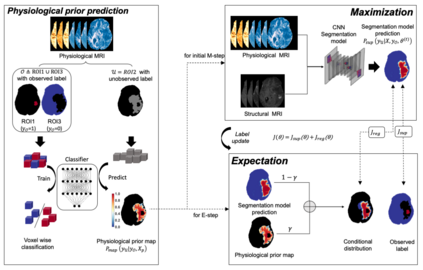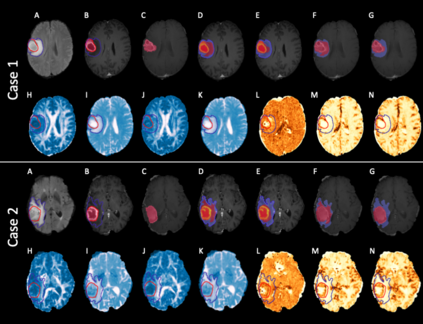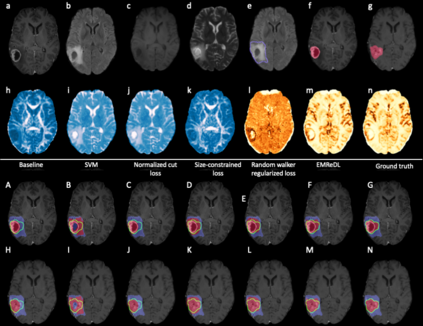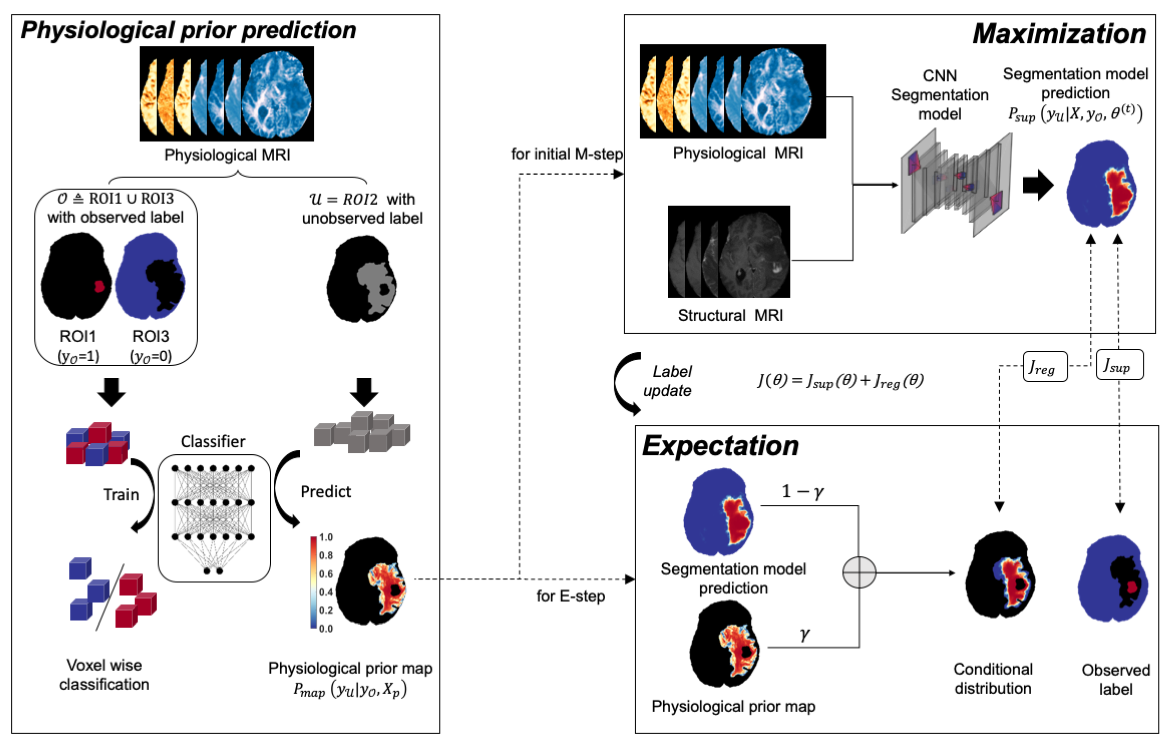We present an Expectation-Maximization (EM) Regularized Deep Learning (EMReDL) model for the weakly supervised tumor segmentation. The proposed framework was tailored to glioblastoma, a type of malignant tumor characterized by its diffuse infiltration into the surrounding brain tissue, which poses significant challenge to treatment target and tumor burden estimation based on conventional structural MRI. Although physiological MRI can provide more specific information regarding tumor infiltration, the relatively low resolution hinders a precise full annotation. This has motivated us to develop a weakly supervised deep learning solution that exploits the partial labelled tumor regions. EMReDL contains two components: a physiological prior prediction model and EM-regularized segmentation model. The physiological prior prediction model exploits the physiological MRI by training a classifier to generate a physiological prior map. This map was passed to the segmentation model for regularization using the EM algorithm. We evaluated the model on a glioblastoma dataset with the available pre-operative multiparametric MRI and recurrence MRI. EMReDL was shown to effectively segment the infiltrated tumor from the partially labelled region of potential infiltration. The segmented core and infiltrated tumor showed high consistency with the tumor burden labelled by experts. The performance comparison showed that EMReDL achieved higher accuracy than published state-of-the-art models. On MR spectroscopy, the segmented region showed more aggressive features than other partial labelled region. The proposed model can be generalized to other segmentation tasks with partial labels, with the CNN architecture flexible in the framework.
翻译:我们为监督不力的肿瘤分解区提供了期望-最大程度的常规深层学习(EM)模型。拟议框架是专门为Glioblastoma设计的,这是一种恶性肿瘤,其特征是渗透到周围的脑组织,对治疗目标和肿瘤负担估计构成重大挑战。虽然生理MRI可以提供有关肿瘤渗入的更具体的信息,但相对较低的分辨率阻碍了准确的完整注解。这促使我们开发了一个监督不力的深度深层学习框架,利用部分标注的肿瘤区域。EMREDL包含两个组成部分:生理先前的预测模型和EM-正规化的分解模型。生理先前的预测模型利用了生理MRI,培训了分解器生成了先前的生理图。该图被传给了使用EM算法进行正规化的分解模型。我们用现有的预操作性多度多度MRI和复现的模型评估了GRI。EMREDL展示了将部分部分部分肿瘤分解从部分标定的分解器从部分的分解到部分标定的分解区,通过高额的分解模型展示了业绩分解的分解过程,而展示了其他的分解了其他的分解结构,而展示了其他分解了其他的分解,而显示的分解式的分解式的分解了其他的分解式的分解了高的分解。








